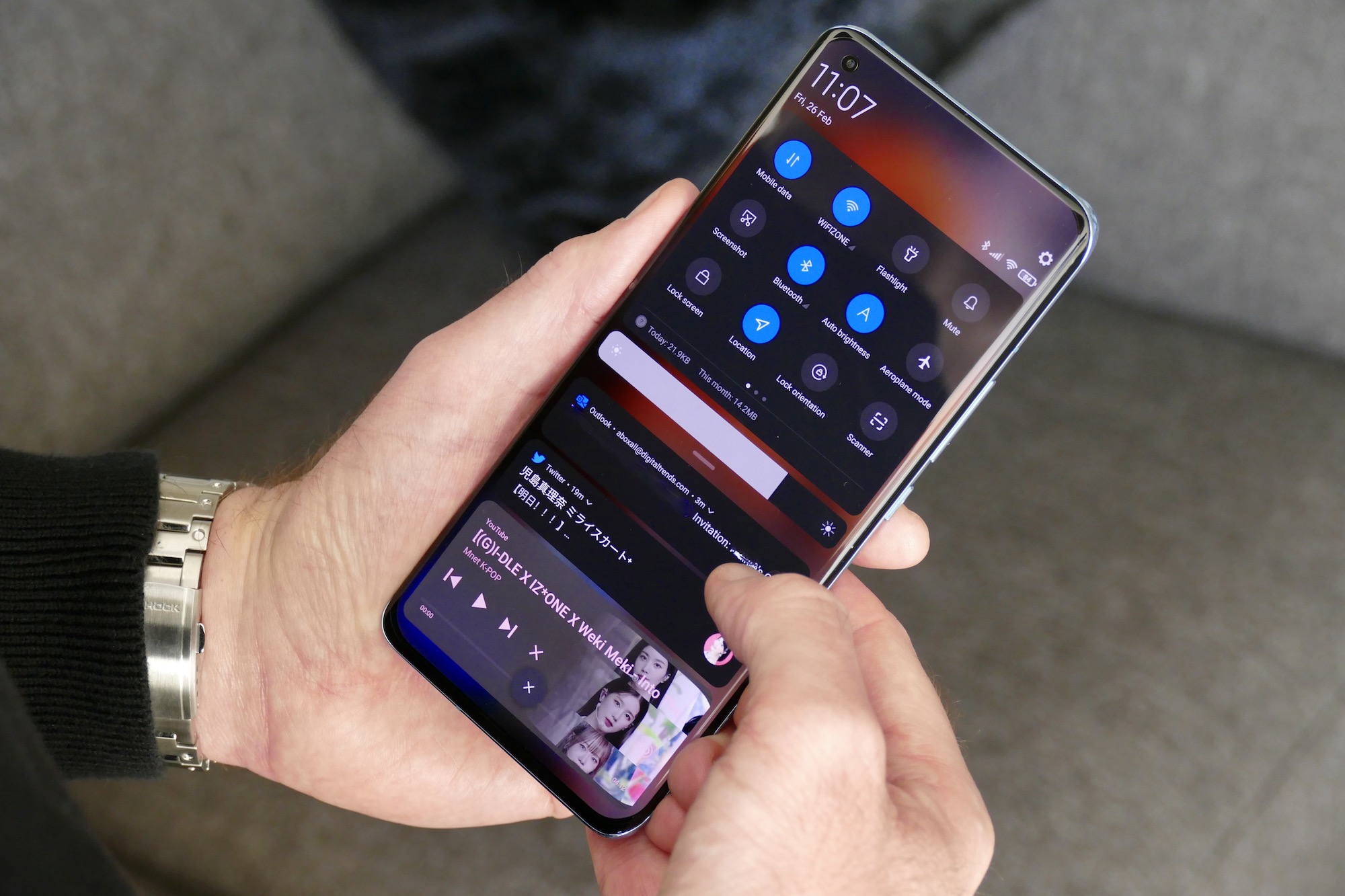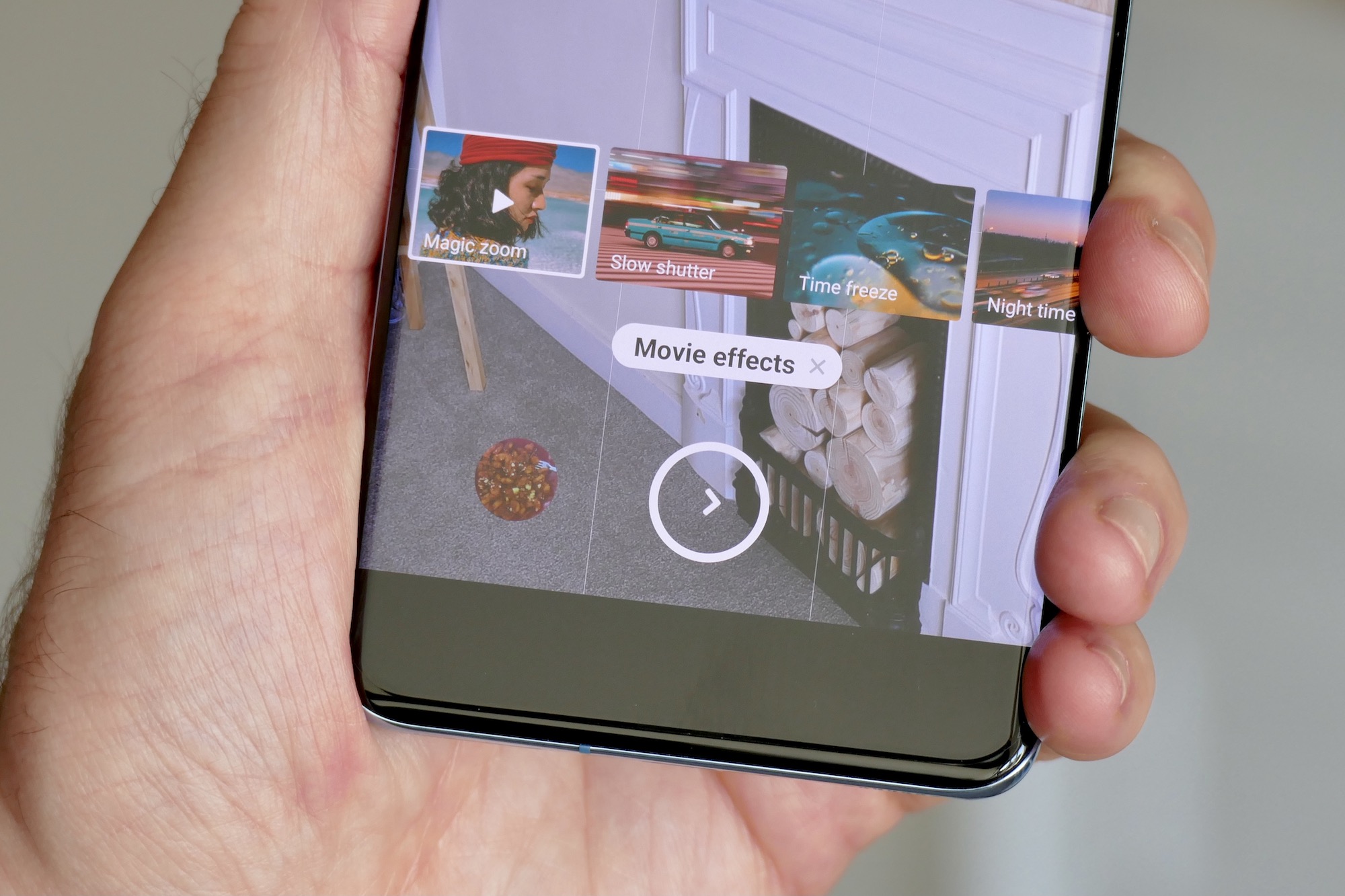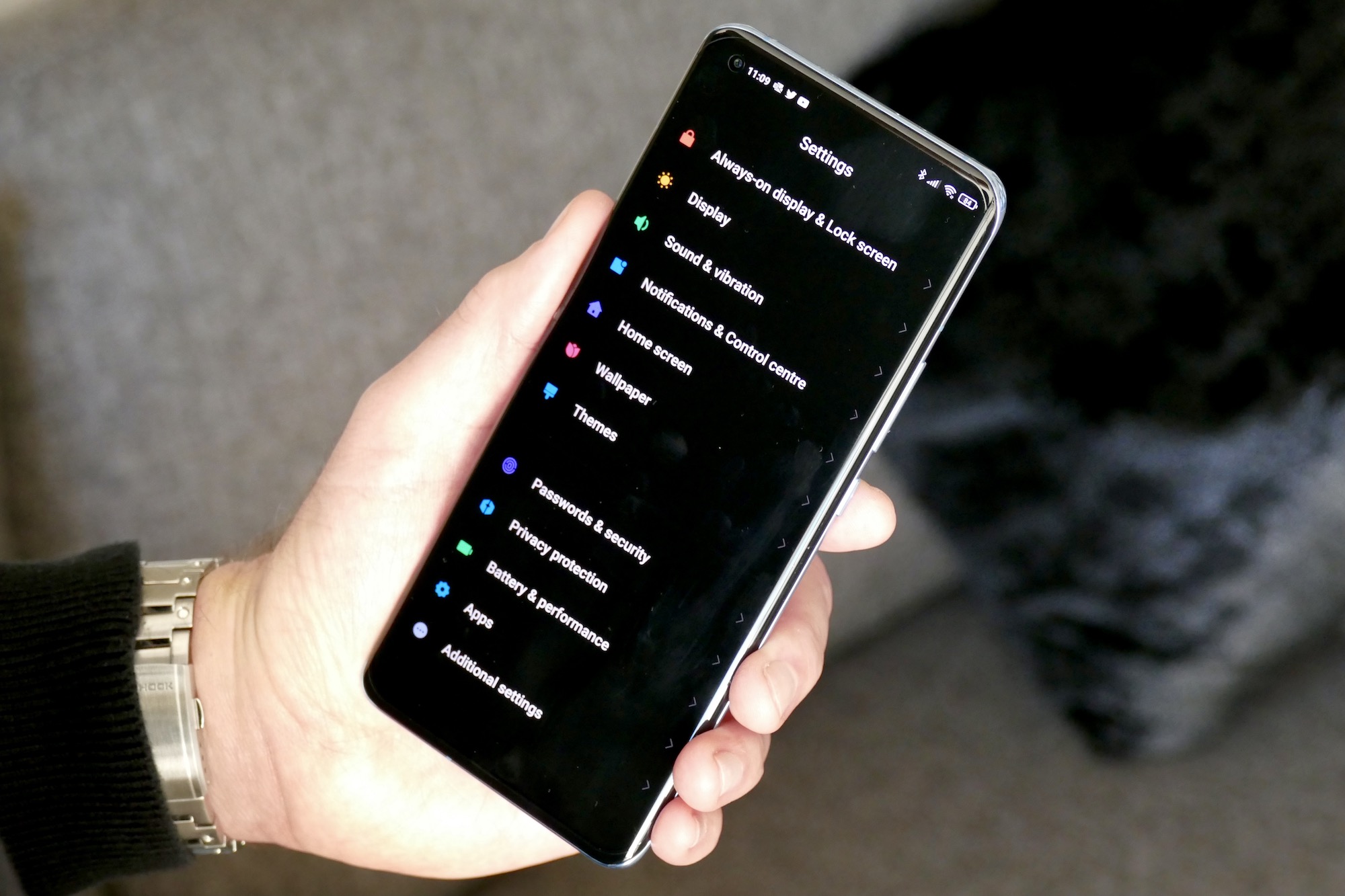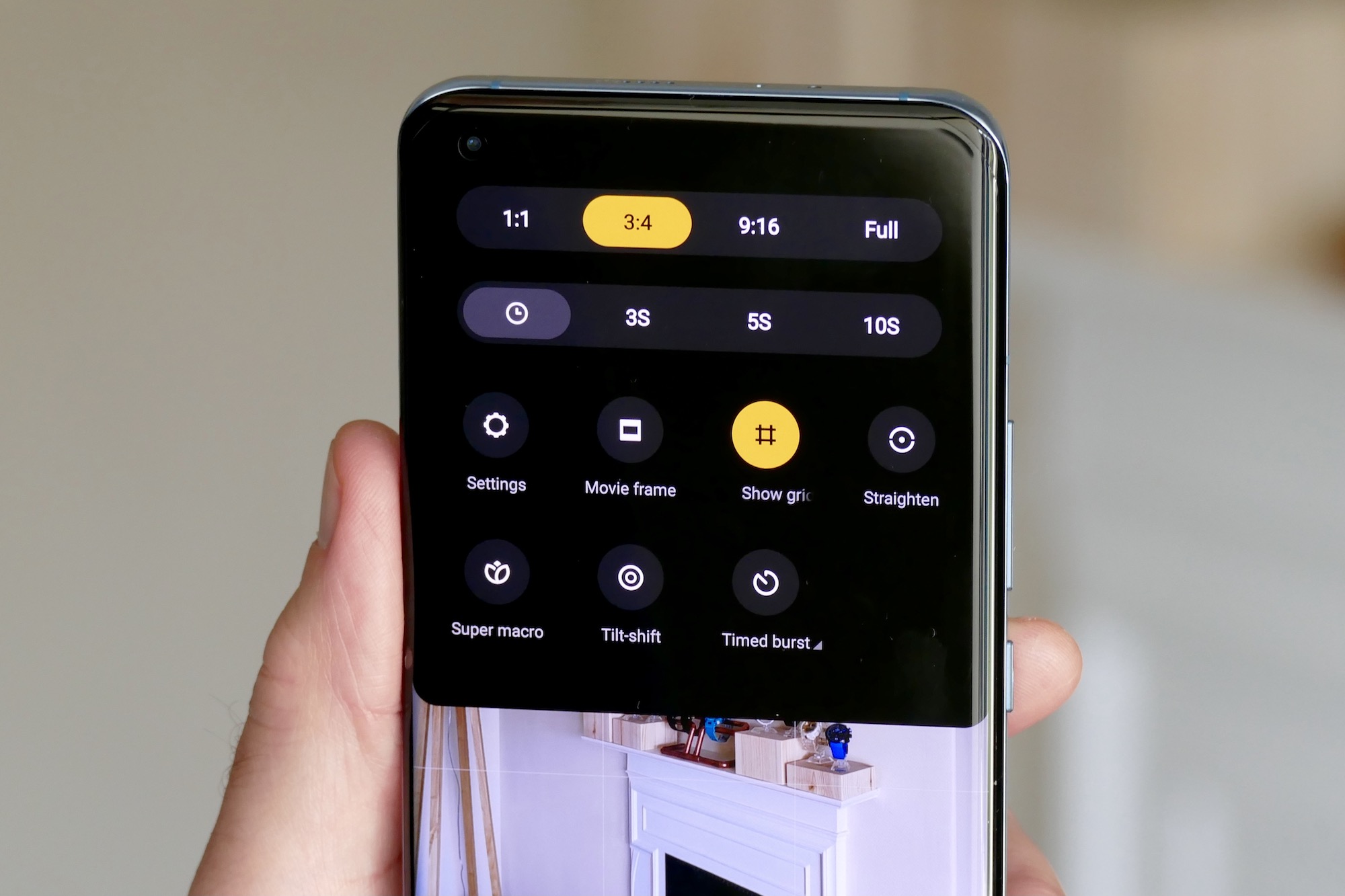“The Xiaomi Mi 11's screen, camera, and performance are enviable, but the battery disappoints and the software still needs polish.”
- Stunning screen
- Capable 108MP camera
- Very fast wired and wireless charging
- Poor battery life
- Software still needs polish
- No widespread availability (yet)
If you’ve looked at the Samsung Galaxy S21 and S21 Plus and shrugged, nonplussed by the decent-but-not-outstanding specifications, then the Xiaomi Mi 11 may be exactly what you’re looking for. It boasts the kind of specs and feature list that we expect from Samsung’s sensibly sized flagship S Series phones, and then charges less than even the simplest Galaxy S21 for the pleasure of owning the device.
Xiaomi has long excelled in delivering strong on-paper specs coupled with a great value price, but then stumbled when it comes to usability and polish. It has a great chance to impress with the Mi 11, so has it done so?
Design
With its metal frame, curved Gorilla Glass Victus over the screen, and Gorilla Glass 5 for the back panel, the Xiaomi Mi 11 is made from exactly the materials we expect to find on a top-level smartphone today. The shade of the icy blue color on the back of my Mi 11 subtly changes when it catches the light, it doesn’t attract too many fingerprints, and the overall footprint of the phone is manageable. It’s not too heavy either, at 196 grams.
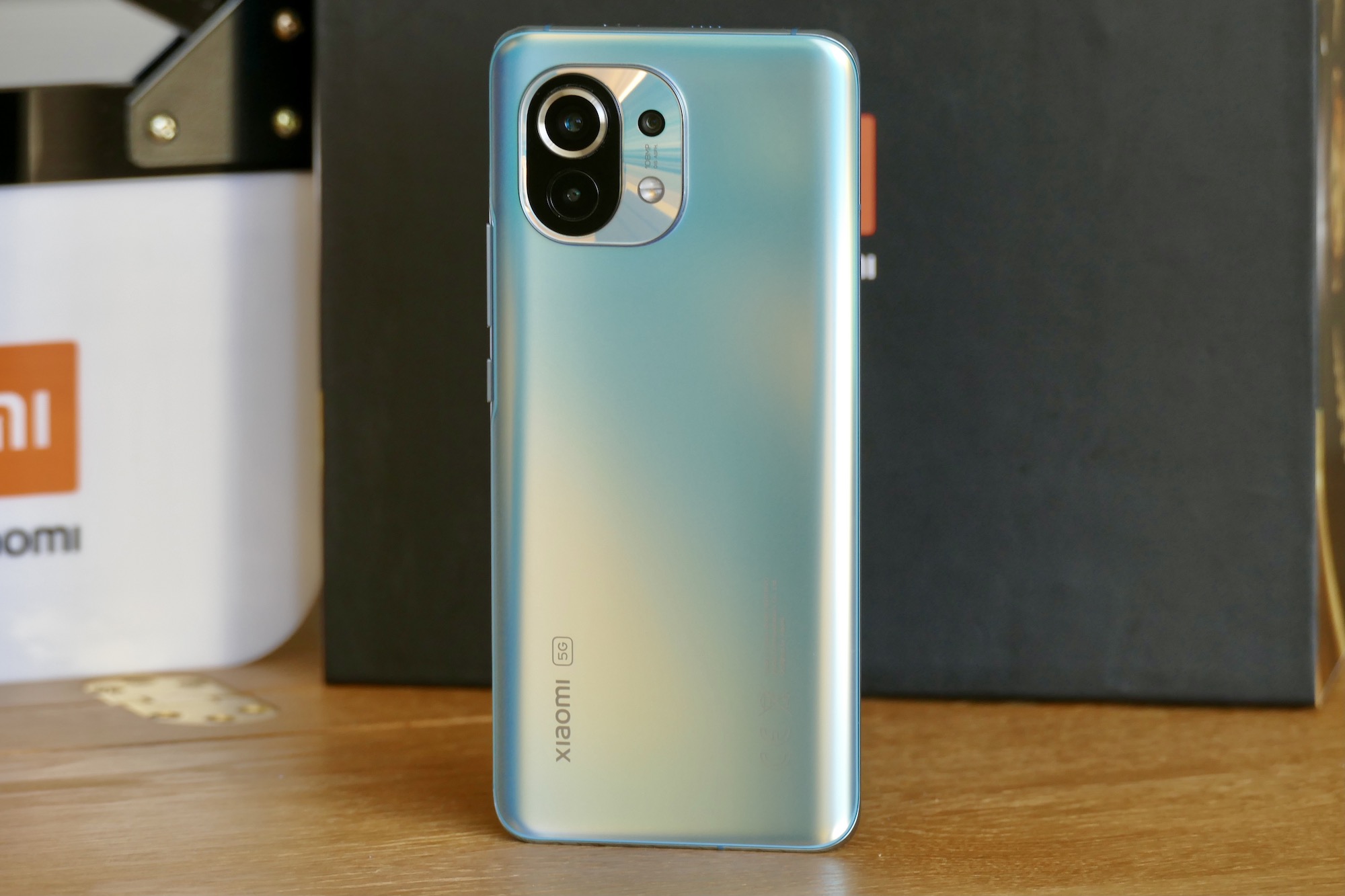
The camera module on the back is unusual, not only in shape but also due to the amount of “steps” it has. There are three different levels, all in different shapes, and each with different lenses and colors, making it instantly noticeable. It’s busy in a way the lens arrangement on the S21 is not, but it certainly won’t be mistaken for any other camera array out there.
Maybe it’s a good thing it looks different, as the Mi 11 otherwise doesn’t push smartphone design forward in any way. The curved glass panels meet the metal chassis in the expected fashion, there are speaker grilles at the top and bottom, there’s no headphone jack, and there are three buttons on the right-hand side of the chassis. In your hand, it feels like the OnePlus 8, the Galaxy S20+, the Oppo Find X2 Pro, and many other phones released over the past couple years.
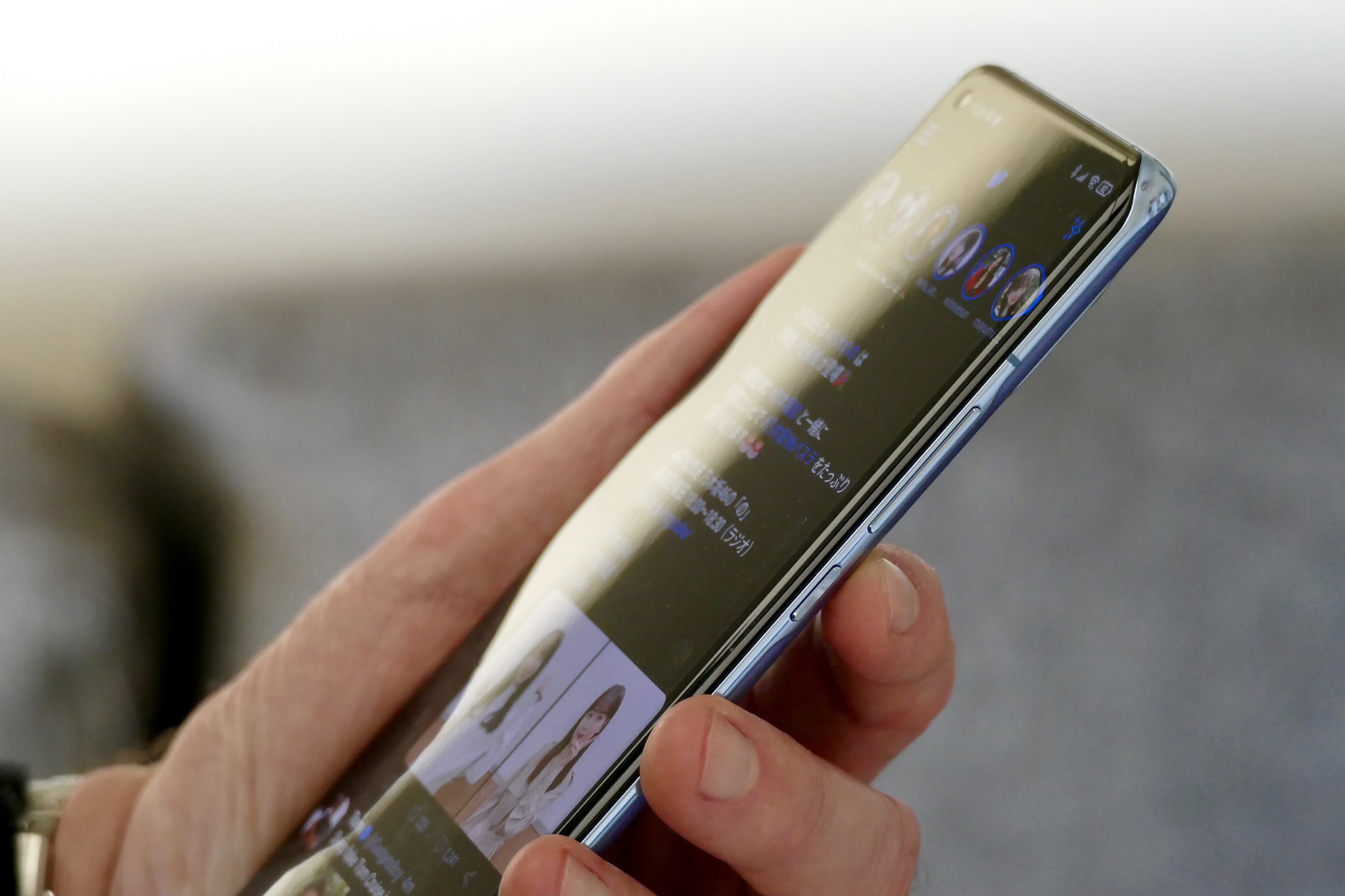
One odd part of the design concerns the bezels around the screen corners. The device edges appear to be at a slightly different angle than the screen’s edges, and once you notice, it becomes frustratingly hard not to see. Also, although the glass is curved at the sides, the screen does not extend far down them. Some may see this as an advantage, but it also means the black bezels are more noticeable than we would like.
Screen and audio
The Mi 11 has a 6.81-inch AMOLED screen with a 3,200 x 1,400 pixel resolution, 120Hz refresh rate, HDR10+ support, and a 1,500 nits maximum brightness. This goes beyond the specs of the Galaxy S21+, and meets those of the Galaxy S21 Ultra. However, seeing as the FHD+ screen performance on the Galaxy S21+ is indistinguishable from the WQHD+ screen on the S20+, does it really matter?
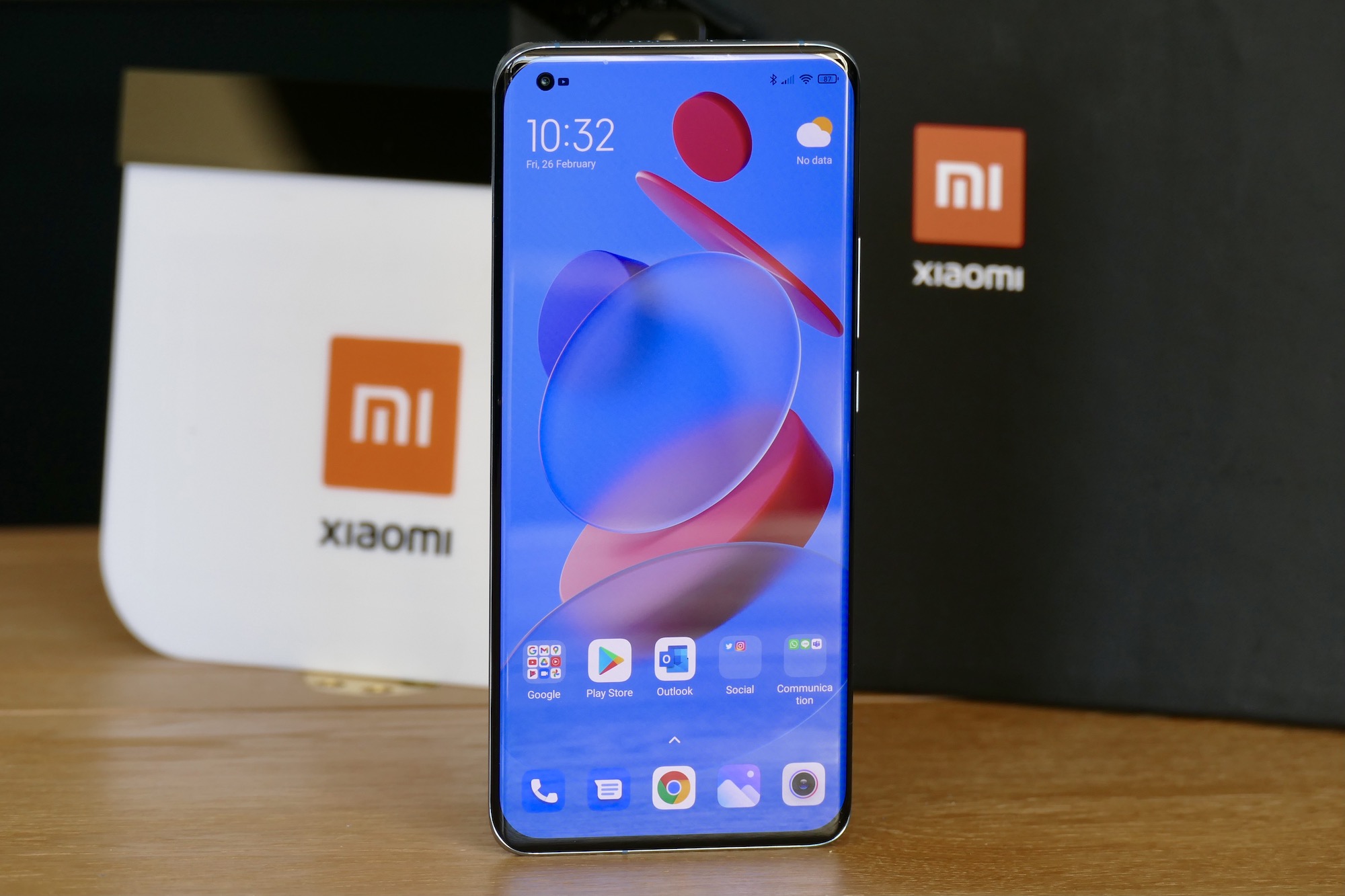
Putting the Mi 11 alongside the S21+, I really couldn’t see any difference when playing high-resolution videos on YouTube — but this is not a bad thing, as it looks fantastic. This version of Iz*One’s Panorama music video (below) looks sharp and stunning on both phones, with masses of color and deep contrast, perfect control during the sequences with strobing lights and fast movement, and a high brightness level. Xiaomi matches Samsung’s screen performance with the Mi 11.
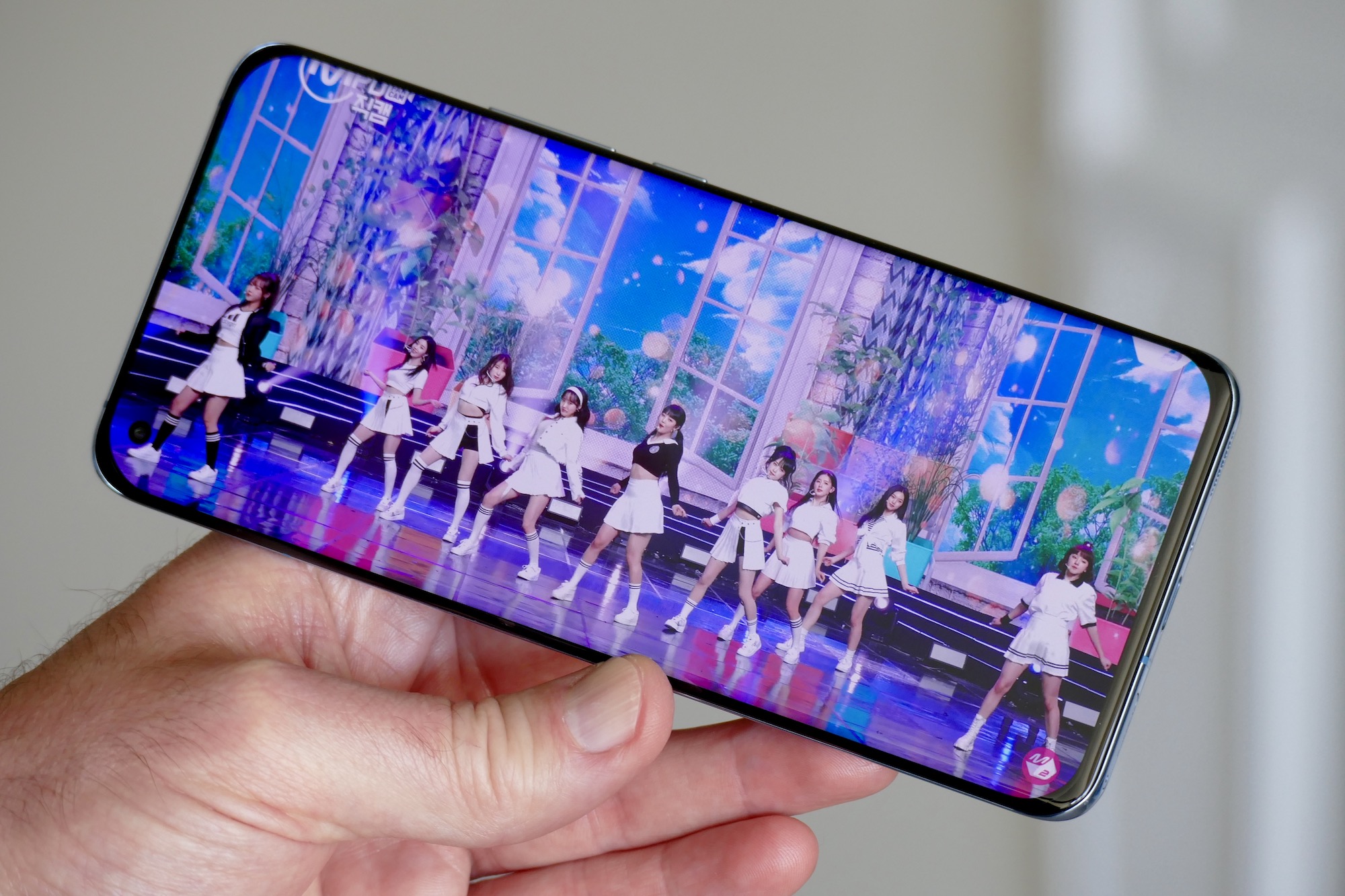
Xiaomi’s excellent dual-speaker system, with audio tuned by Harmon Kardon, is clear and loud, with only minimal harshness at maximum volume. The speakers are too small for much bass, but the Mi 11 has a deeper tone than the iPhone 12 Pro, and overall sounds very similar to the Galaxy S21+. It’s also great to see AptX HD and AptX Adaptive on the list of Bluetooth features, meaning the Mi 11 streams the highest-quality audio to compatible headphones. YouTube Music sounded great listening to the Vivo TWS Neo earbuds with AptX Adaptive , and there was only a small amount of occasional lag when playing games.

I couldn’t find any downsides with the display itself, but was surprised at the need to activate the 120Hz refresh rate, rather than it being set by default. Some people may miss out because of this idiosyncrasy. Otherwise, the audio/visual experience on the Mi 11 is superb, and certainly comparable to the very best phones you can buy today.
Camera
There are three cameras in the multilevel module on the back of the Mi 11: A 108MP main camera with a 1/1.33-inch sensor and optical image stabilization, a 13MP wide-angle camera, and a 5-megapixel macro camera. It does not have an optical zoom, but does have some unusual video camera features and can shoot 8K video, too. The 20MP selfie camera sits inside a hole-punch cutout in the screen.

I’ve enjoyed using the Mi 11, confident it will take good photos, but I have missed an optical zoom feature, and have found more images need editing than on the Galaxy S21 Ultra. White balance, for example, seems to be a weak point of the camera.
- 1. Mi 11 original
- 2. Mi 11 Cropped version
There’s no denying the amount of detail the camera captures, though. The photo of the pond above features a small sign on the wall in the center of the photo, but it’s only when you zoom right in that you can clearly read the “Do not leave rubbish, take it home” message. This same photo shows the Mi 11’s lovely tone, capturing the end-of-winter colors very effectively.
The large sensor adds a deep, natural depth of field, and is really more effective than the haphazard Portrait mode for adding bokeh to your photos. Low light is good too. The photo of an early morning red sky still captures a decent level of detail even though the 2x setting is a digital zoom. Some edge distortion is evident in wide-angle shots, and colors are a little muted.
The Mi 11’s camera, whether shooting stills or video, is a great partner.
Autofocus makes the 5MP macro camera more usable than most, but it’s still not quite as good as the Galaxy S21 Ultra’s macro mode, which uses the wide-angle camera. It’s problematic because it’s a little hit-or-miss in terms of whether it focuses on what you want it to. Tapping the screen helps, but the camera never seems happy with the distance it is away from the subject, so getting everything “just right” takes time. That’s fine if your subject is stationary, and you don’t mind taking multiple photos, but not if it’s moving. Either way, you need patience, and an empty Gallery, to end up with one or two usable photos.
Video and editing modes
The Mi 11 camera’s gimmick (and yes, they are gimmicks) relate to video. Hit the Movie Effects setting and you get a selection of clever, but very niche, video effects to try. Magic Zoom creates your own dolly shot (like this famous shot from Jaws), while Time Freeze holds your subject in shot while the world continues to move around it, and Parallel World folds the scene over on itself, Inception-style.
Each one works quite well, and are a credit to Xiaomi’s artificial intelligence (A.I.) and software efforts, but they are only usable in very specific situations. Magic Zoom works best when there is plenty of distance between you and your subject, and it therefore needs to be quite large. Time Freeze needs people to work, and they have to be doing something vaguely interesting for it to be interesting. Restrictions on movement where I live mean these features are mostly unusable for now, but even when I do see actual people again, I can’t see these features being used aside from out of curiosity.

The 8K video recording feature is available at 24 frames per second (fps) or 30 fps, and results in massive file sizes (at least 500MB per minute) and content you can only truly enjoy on an 8K television. There are plenty of other modes, too, from a 15-second Short Video setting to a Dual Video mode to shoot with both the front and rear cameras, giving you plenty to try out — just don’t expect them to be features you use every day.
Xiaomi’s photo-editing mode is similarly fun, and again shows off its A.I. prowess. There’s an effective editing feature where the look of the sky can be altered, like a bokeh portrait mode for the sky, and it’s surprisingly good at completely changing the mood of a photo. The Mi 11’s camera, whether shooting stills or video, is a great partner. The features can be gimmicky, but there are plenty to have fun with occasionally, and the quality of the main camera is undeniable.
Software and performance
My review Mi 11 has Android 11 with MIUI 12 over the top and the January 1, 2021, security patch installed. It’s the best version of MIUI I’ve used, but that’s not an unequivocal recommendation — it just means it’s not as finicky as older versions. On the positive side, it’s very pretty, very fast, and the Settings menu is mostly laid out very well. Every app I downloaded worked without a problem, and its not frustrating in terms of operation.

However, there are some annoyances you don’t find on the S21+, or the iPhone. The keyboard is set right at the bottom of the phone, making it awkward to use sometimes. Notifications are presented well in the notification shade, and you can interact with them there, but I didn’t receive all of them all the time, and sometimes the phone would deliver a host of them all together when I unlocked it for another reason. There’s no “bounce” to the notification shade either, so when you flick the screen to reveal hidden messages, if there aren’t any, it simply closes the shade and throws you back to the home screen.
I like the various always-on screen options, the wide range of display customizations, and the dark mode. Oddly, the dark mode adds darkness to the wallpaper, too, but this can be turned off by digging into the Settings. This is probably the biggest issue with MIUI. The endless customization means spending time to get it just right, and sometimes not being aware why something looks or functions like it does.
Finding the Macro mode in the camera app is a great example of MIUI being crowded and messy. It’s not a standard setting on the option list in the viewfinder, it’s not a “flower” icon next to the wide-angle and zoom options, and it’s not hidden under the More menu. Instead, it’s under another menu at the top of the screen, which is much too easy to miss.
None of these things make MIUI especially bad, they just mean the Mi 11’s software carries a steep learning curve before it really feels like home, especially if you’re coming from an operating system like iOS or Android on a Google Pixel phone.
Qualcomm’s new Snapdragon 888 chip powers the Mi 11. My review version has 8GB of RAM and 128GB of storage, but a 256GB model with 12GB RAM is also available. I can’t see why you’d need 12GB of RAM because I have never thought the phone was slow to react. I played Asphalt 9: Legends, and it’s smooth, very fast, and the screen looks wonderful. The Mi 11 is great for gaming due to the moderate weight, plus there is a gaming mode to hold notifications and silence calls.
Battery and security
Now we come to the biggest disappointment in the Mi 11 — the battery. The 4,600mAh cell may have the capacity for a lengthy use time, and it does come with wired and wireless fast charging, but it doesn’t have the guts to last more than a full day (and even then it’s only just) when it’s under heavy use.
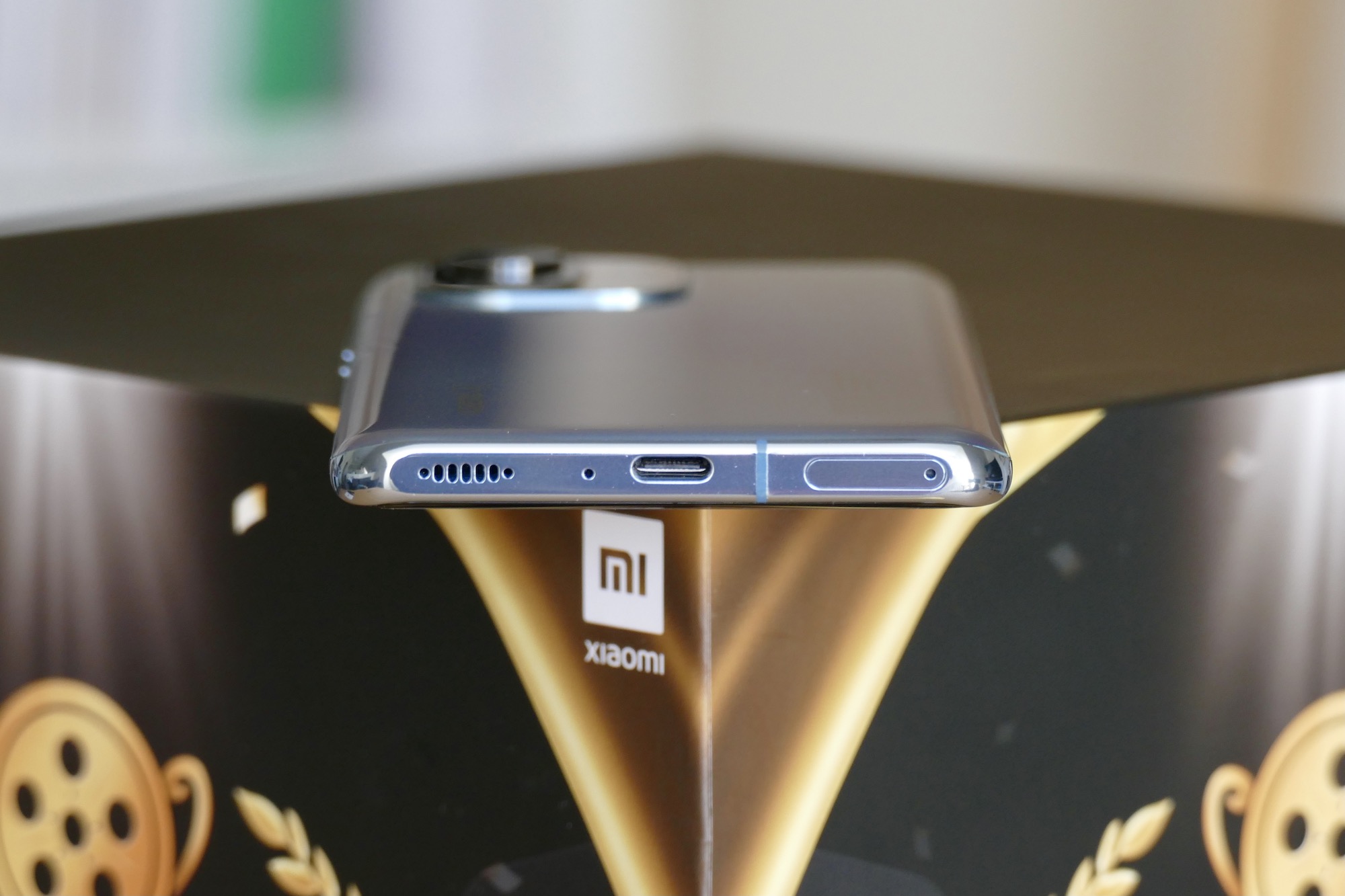
I mostly use Wi-Fi at the moment, and even then, the Mi 11’s poor battery life showed up. A few videos, some photos, a short gaming session, and normal use outside of these things sees the battery down to 60% by early afternoon. That’s at least 20% less than I see on most other phones, including the Galaxy S21 Ultra. Take it outside and connect to a cell signal, and things are even worse.
With moderate use, the battery reduces at an alarming rate, and even partway into the day, I questioned whether I’d have to charge it before I went to bed. The cell isn’t small and the phone doesn’t get hot, suggesting it’s a software optimization issue and the battery life may be improved with future software updates. Happily, there’s a 55-watt wired charger in the box that promises a 45-minute fast charge time. If you have Xiaomi’s 50W wireless charger, the charge time is still less than an hour, but this does not come with the phone.
The biggest disappointment in the Mi 11 — the battery.
The security systems are better, but also not perfect. The in-display fingerprint sensor sometimes needs a few beats longer than you would expect to unlock the phone, so lifting your finger too quickly results in it not opening. Frustratingly, it doesn’t happen all the time, so it’s hard to adjust your use to compensate. However, the face unlock is very fast, so you may not use the fingerprint sensor at all.
Price and availability
Choosing the Mi 11 over the Galaxy S21 or S21+ is one thing, but getting a Mi 11 in your hands is another. Xiaomi doesn’t officially sell its smartphones in the U.S., so you’ll have to import one. Similarly, the phone has not been confirmed for release in the U.K. yet, but we imagine it will be soon, as it’s available in parts of Europe. It starts at 749 euros, which converts over to about $900 U.S., or 650 British pounds.
Our take
The Mi 11 is a truly high-performance device with a fantastic screen, a capable 108MP camera, and many of the right features and specs, all at a very reasonable price. However, all this can’t quite make up for the disappointing battery life and MIUI problems around notifications and menu clutter. Xiaomi’s hardware is excellent as always, but also like we see too often, the software — although improved — can’t quite match competing phones from Samsung, Apple, and OnePlus.
Is there a better alternative?
Yes. If you don’t want to spend $1,000 on the Samsung Galaxy S21 Ultra or iPhone 12 Pro — our two top recommendations — and want something around $700, then the Samsung Galaxy S20 FE is a great buy, as is the Google Pixel 5. However, if the Xiaomi Mi 11 receives a U.K. release in the very near future, it would be a great alternative to the OnePlus 8 Pro, which although excellent, doesn’t feature the latest Qualcomm chip. Its camera is not as capable as the Mi 11’s either.
How long will it last?
The Qualcomm Snapdragon 888 processor is right up to date, and there’s more than enough capability to keep the phone fresh for two or three years. Xiaomi’s MIUI software updates are more frequent than its Android version updates, so while it’s running the newest software now, this won’t be the case when Android 12 is released later this year, and it may take a while for the update to arrive.
Unfortunately, the Mi 11 is not water resistant, and the glass body won’t be especially resistant to damage if the phone is dropped. A case would be a very good idea if you want the phone to last. The Xiaomi Mi 11 has 5G connectivity, provided you have coverage in your area.
Should you buy it?
No. It’s a capable phone with plenty of good points, but the battery life is disappointing, and the additional camera features — although technically impressive — don’t add enough long-term interest. Also, you have to import it in the U.S., and it doesn’t have a final release date for the U.K. yet.












